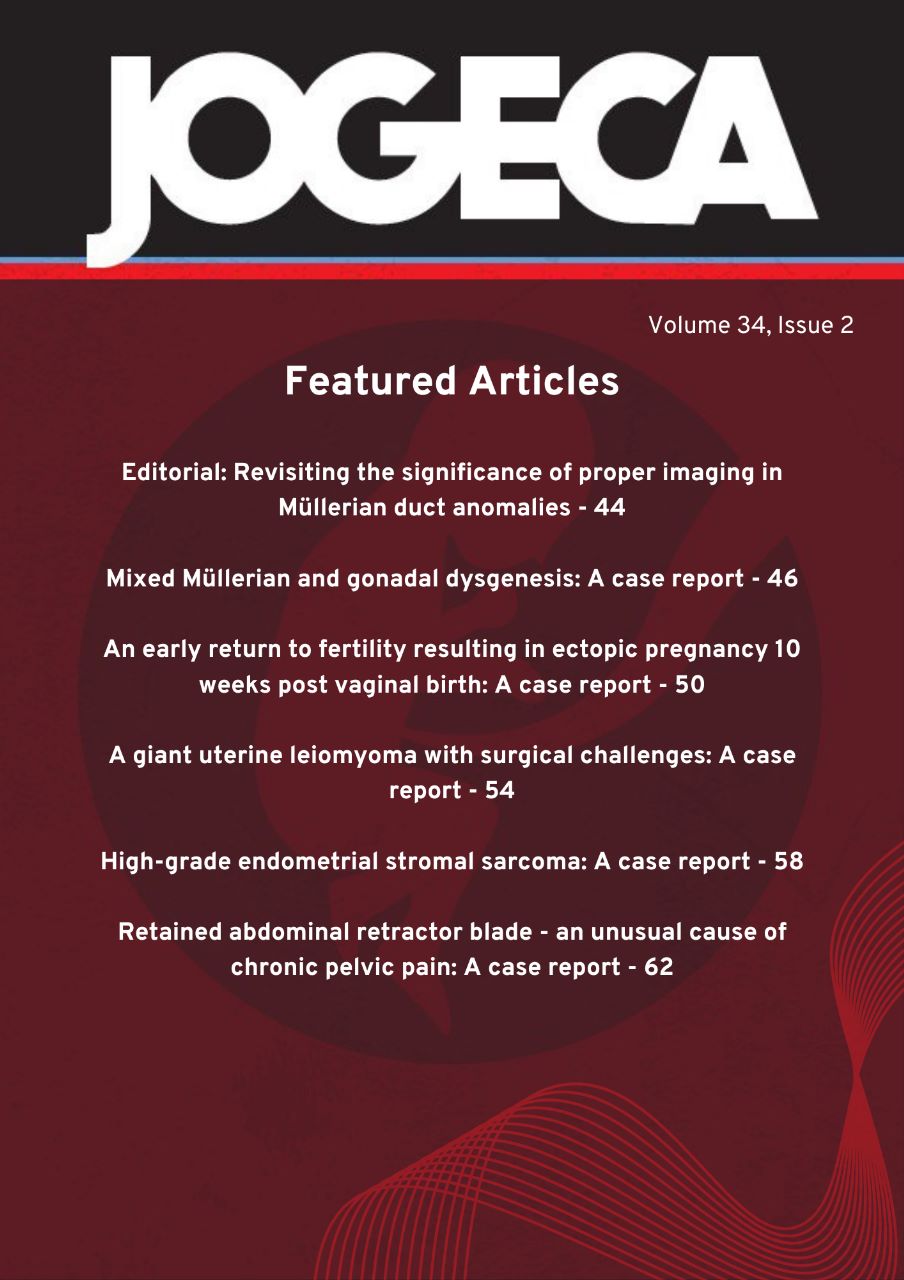Blood loss monitoring chart, a game changer in postpartum hemorrhage detection and treatment: A direct observation study in 7 E-MOTIVE trial hospitals in Kenya
DOI:
https://doi.org/10.59692/jogeca.v36i1.156Abstract
Background: Every six minutes, a mother dies of postpartum hemorrhage (PPH) in low-resource countries. PPH, defined as blood loss of more than 500 ml, is the leading cause of maternal death worldwide, accounting for 27% of maternal deaths. The WHO published “Recommendations for the Prevention and Treatment of Postpartum Hemorrhage” in 2012 to provide evidence-informed recommendations for managing PPH. However, adherence to these recommendations is currently limited by several challenges, including poor maternal care where despite guideline dissemination, many health care providers (HCPs) do not provide effective care such as proper monitoring of vital signs which is key in hemodynamic assessments that can prompt early intervention. The E-MOTIVE trial supported 14 health facilities in Kenya, 7 intervention and 7 control sites. The trial introduced a blood loss monitoring chart to support HCPs in assessing women after delivery of the placenta and enabling early detection and treatment of PPH.
Methods: Blood loss monitoring tool/Trigger chart was developed by the University of Birmingham. This tool was implemented in seven hospitals in Kenya with the capacity for comprehensive emergency obstetric care, including blood transfusion and cesarean delivery. In these hospitals, labor, delivery, and postpartum care are primarily provided by nurse-midwives and students. More senior clinicians, including medical officers and consultant physicians such as obstetrician, gynecologists and pediatricians, make periodic rounds and are available on-call to assist in emergencies. Data were collected from August 2021 to December 2021. Observations were conducted by the trial implementation midwives with the support of the on-site research midwives for two weeks in each of the study hospitals. Observations occurred 24 hours a day. Patients were observed from the second stage up to two hours after placental delivery. All data were collected on paper forms and then entered into a digital database using RedCap.
Results: A total of 734 deliveries were observed cumulatively during the study period. All women received four clinical observations within the first hour using the blood loss monitoring chart. The frequency of observing blood loss in the calibrated drapes during monitoring by HCPs was 94%. There was 100% detection of PPH using the blood loss monitoring chart.
Conclusion: Efforts to increase the rates of early PPH detection and treatment should emphasize improvements in the quality of care, with a particular focus on PPH blood loss monitoring. The blood loss monitoring chart is easy to use and can be easily adopted and scaled in low-resource settings.
Downloads
Published
How to Cite
Issue
Section
Categories
License
Copyright (c) 2024 The Authors.

This work is licensed under a Creative Commons Attribution 4.0 International License.




